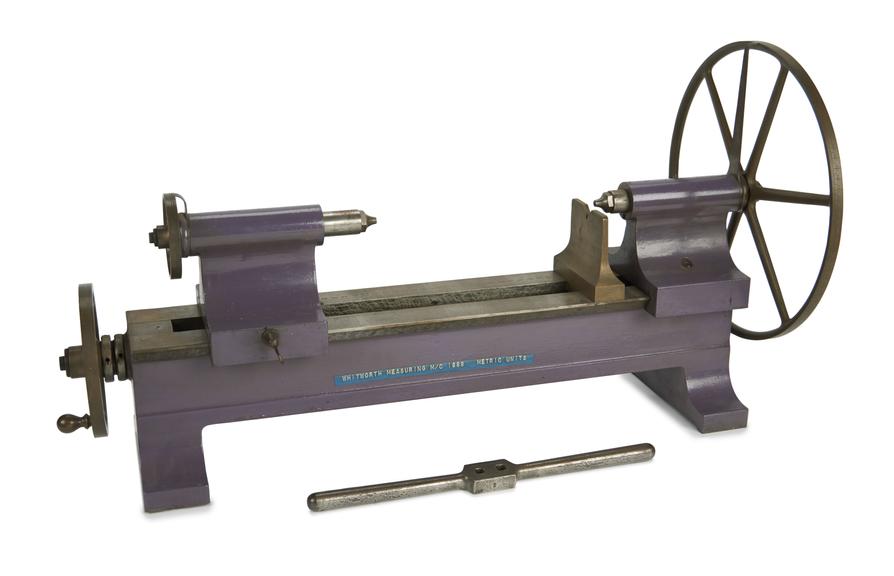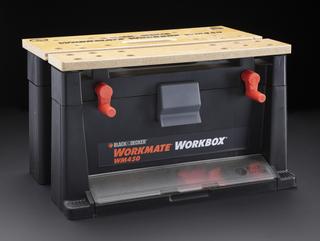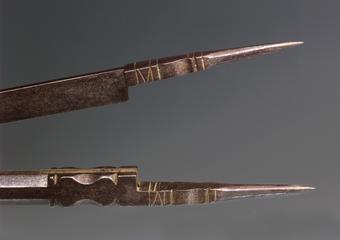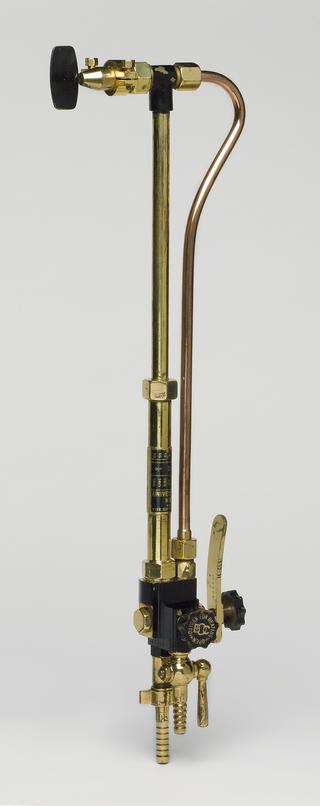
Whitworth Measuring Machine
- Made:
- 1889 in Manchester

Bench micrometer, made by Joseph Whitworth and Company Limited, 1889.
The inaccuracy of measurements in engineering hampered the early development of machine tools. Callipers and compasses were used to take measurements before James Watt constructed the first known bench micrometer in 1780. Micrometers are instruments that can measure to a very fine degree. On a bench micrometer two heads are set onto a metal base. An object is placed between them. One or both heads are moved by means of a wheel until both are touching the object. Henry Maudslay (1771-1831) developed a bench micrometer around 1805 that was accurate to six-thousandths of an inch.
Joseph Whitworth had worked for Henry Maudslay, and was familiar with his bench micrometer. It used wheels with measuring marks to set measurements by sight; a method known as line measurement. Whitworth created his own machine that he named a workshop measuring machine. It allowed engineers to check that the parts they were working on were the correct size. Whitworth created another measuring machine that relied on feel rather than sight: a method called end measurement. It used pre-measured bars rather than marks on the wheel to set measurements. This was considered to be more accurate than the existing line system. Whitworth’s machines were said to be accurate to within one millionth of an inch, and were known as ‘millionth’ measuring machines. This machine is a version of the ‘millionth’ measuring machine, as it can use measuring bars to set the distance between the two heads. Whitworth’s reputation for accuracy led to the nationwide adoption of his measuring tools, and helped improve the standard and conformity of machine tool manufacture.
Details
- Category:
- Hand and Machine Tools
- Object Number:
- Y1985.11.1
- Materials:
- cast iron, brass (copper, zinc alloy) and metal (unknown)
- Measurements:
-
handle object: 18 mm x 334 mm x 29 mm,
measuring machine: 365 mm x 698 mm x 308 mm,
- type:
- micrometer
- credit:
- Gift of Tameside College of Technology




